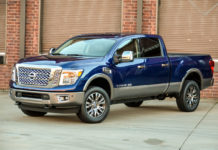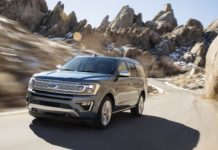Ford Motor Co. could raise more money for its massive restructuring plan or a shift in union health care if the automaker finds a buyer for its Jaguar, Volvo and Land Rover brands, analysts said Monday.
Ford, which lost $12.6 billion last year, is assessing all options for its operations, a person familiar with company plans said.
Ford hired Goldman Sachs and Morgan Stanley to pursue the sale of the three Premier Automotive Group brands, according to published reports citing sources familiar with the strategy. Selling the brands would end a 20-year Ford initiative to expand sales of luxury autos by acquiring European companies. Among the companies, Volvo has been profitable and is the most valued of the brands, while Ford has struggled with Jaguar.
Ford spokesman John Gardiner declined to comment on the reports.
Stefano Aversa, copresident of consulting firm AlixPartners, said auto companies' saying they are “open to every option” may be the new way of announcing plans to sell a unit.
“The last time I heard about a company being open to every option, it was Dieter Zetsche,” chairman of DaimlerChrysler AG, in February talking about the possible sale of Chrysler Group, Aversa said. By May, DaimlerChrysler announced an agreement to sell Chrysler to Cerberus Capital Management.
Several business turnaround experts and automotive industry analysts said the sale of Ford's European luxury brands makes sense because it would allow Ford to focus on its core business as a volume seller of cars and trucks and could generate cash for its North American restructuring.
As part of its Way Forward plan aimed at restoring its North American operations to profitability by 2009, Ford announced plans to close 16 plants, eliminate 44,000 jobs and strengthen the company's product lineup.
“This could free up capital to fund the restructuring,” said automotive analyst Kevin Tynan of Argus Research. “Restructurings are expensive. Ford being leveraged as it is, this could be a way to have a little financial flexibility going into UAW contract negotiations” this summer.
Late last year, the company put up its plants and assets — even its Blue Oval trademark — as collateral to arrange a credit line of up to $25.45 billion to pay for the turnaround and make cash available in case of a recession, strike or product rut.
But it could certainly use more, Tynan said. For example, he said, Ford could use the money raised from a sale of the European brands to help pay to move responsibility for retiree health-care liability from the company to the union, if such a change could be negotiated.
Jim Hall, an analyst from AutoPacific, said he doubts Ford could sell the European brands because of potential complications with its complex line of credit.
The world's third-largest automaker last year indicated a willingness to sell assets. In March it agreed to sell one of its Premier Automotive Group brands, Aston Martin, for $848 million.
Analysts said selling the other European brands would be worth it.
“This company desperately needs focus in terms of preserving its capital and concentrating its management resources,” John Casesa, managing partner of Casesa Strategic Advisors LLC in New York, told Bloomberg News. “It currently has too many mouths to feed.”
Ford's North American operations were the primary source of last year's record $12.6-billion loss, hurt by declining sales of its profitable pickups and SUVs.
But the premier group — primarily Jaguar — contributed to the problems, reporting a loss of $2.3 billion.
The plan to sell the brands, reported by Automotive News Europe and Bloomberg, is known internally as Project Swift, Bloomberg said, a reference to the speed at which Ford wants to make a sale.
Ford bought Jaguar in 1989 for $2.5 billion. A decade later, the automaker purchased Sweden's Volvo for $6.45 billion. Ford agreed in 2000 to pay $2.73 billion for Land Rover.
In 2004, Ford announced a Jaguar restructuring that included closing a British plant, firing 1,150 employees, scrapping a target to build 200,000 vehicles a year and exiting Formula One auto racing. The company invested $2.1 billion in Jaguar in 2005.
Brad Rubin, an auto analyst at BNP Paribas, said Ford probably would like to keep Volvo because it has a good reputation for safety and is profitable, but if it must lose Volvo to be rid of Jaguar and Land Rover, which has become profitable under Ford, it's worth it.
“Getting rid of Jaguar would be a huge relief,” Rubin said. “The biggest positive of a sale of the unit would be having one less headache to deal with.”








